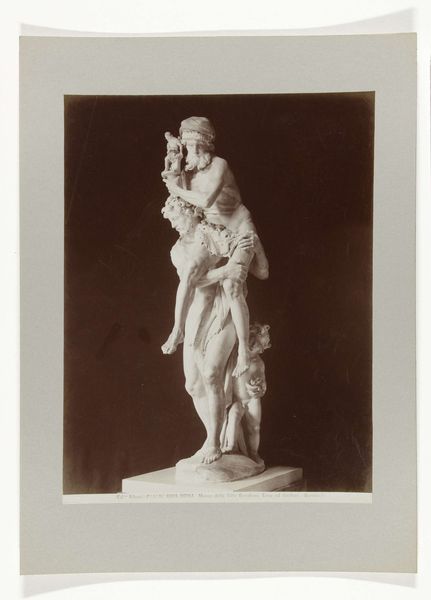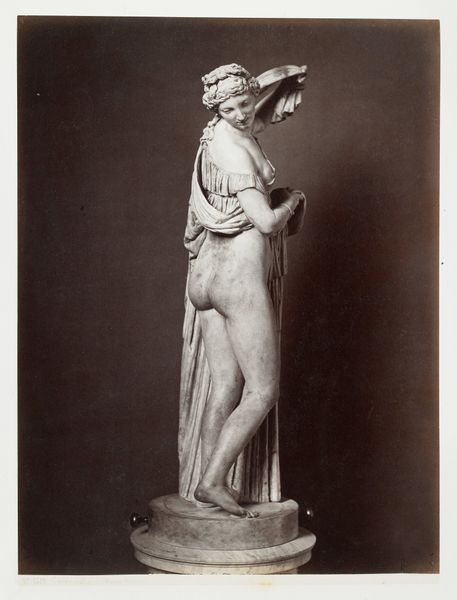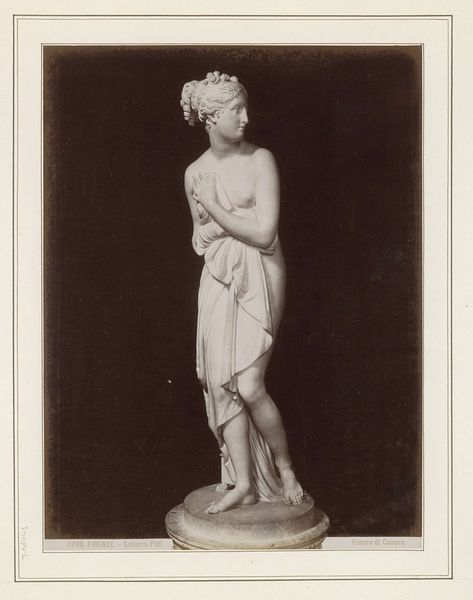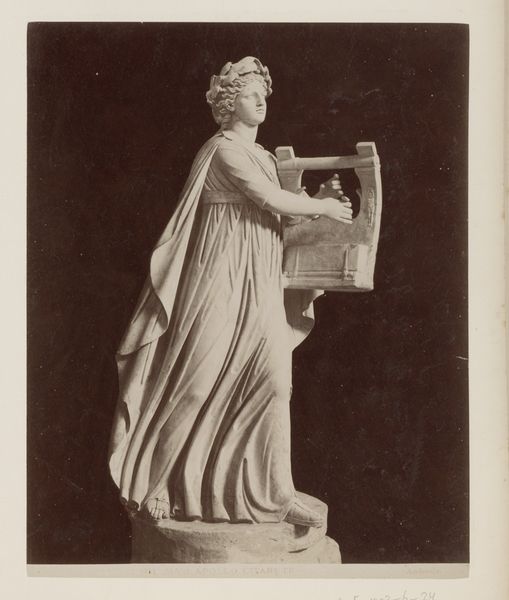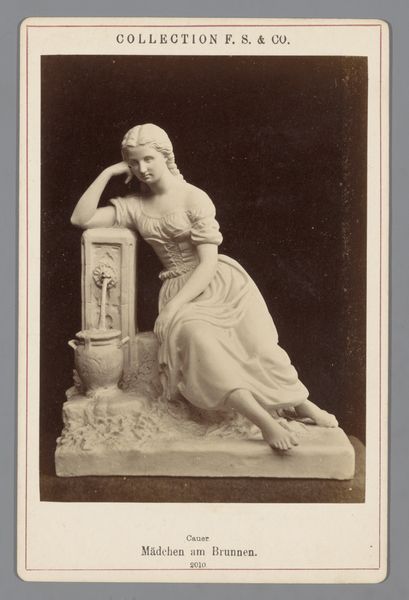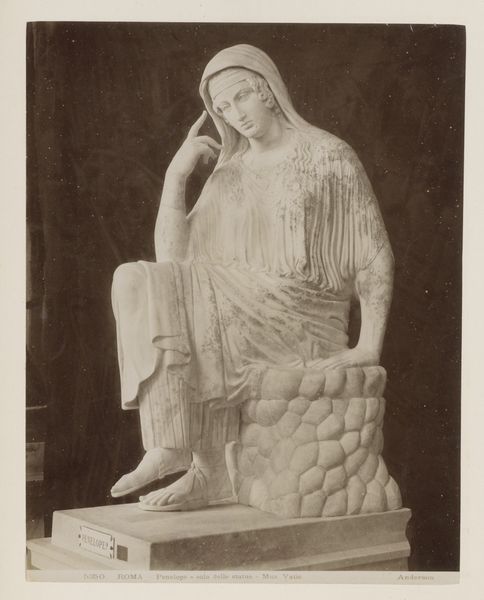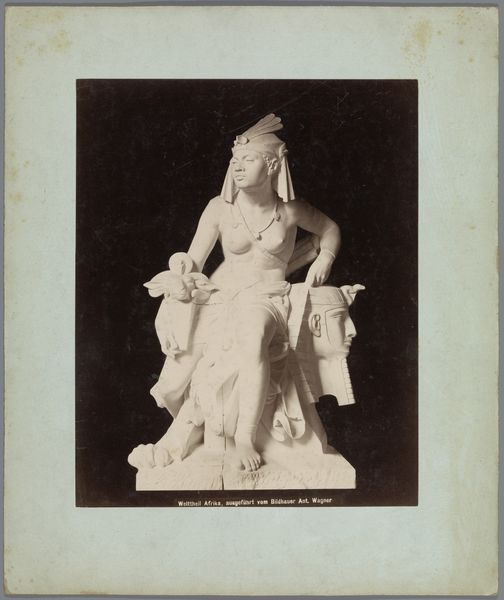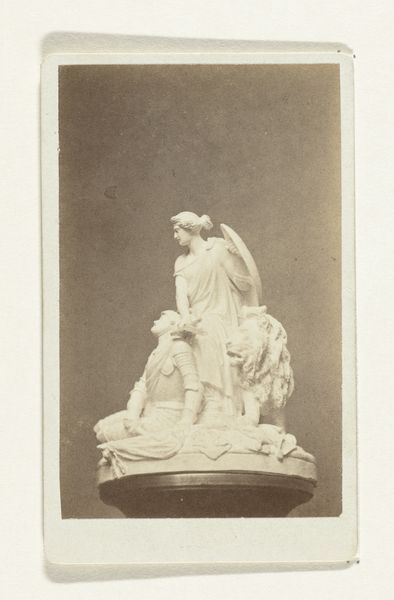
Marmeren beeld 'Mignon' van Eugene-Antoine Aizelin in de Ny Carlsberg Glyptotek in Kopenhagen after 1903
0:00
0:00
#
wedding photograph
#
sculpture
#
charcoal drawing
#
sculptural image
#
charcoal art
#
portrait reference
#
unrealistic statue
#
framed image
#
charcoal
#
statue
Dimensions: height 260 mm, width 207 mm, height 363 mm, width 268 mm
Copyright: Rijks Museum: Open Domain
Editor: Here we have a photo of Eugene-Antoine Aizelin's marble sculpture, "Mignon," residing in the Ny Carlsberg Glyptotek in Copenhagen, taken sometime after 1903. I find the statue incredibly melancholic, she is such a lovely form, but burdened. What are your thoughts when you look at it? Curator: That sense of melancholic beauty is precisely what made these types of sculptures so popular in the late 19th and early 20th centuries. Think about the role museums played then - places of civic pride and displays of cultural achievement, but also sites where narratives of ideal beauty and even tragic heroism were presented to the public. Consider the subject "Mignon," a character from Goethe's "Wilhelm Meister's Apprenticeship." How does choosing a literary figure affect its public role? Editor: That's a fascinating connection! It reframes the sculpture; it’s no longer just about beauty but also about invoking this cultural narrative. What was it about this tragic heroism that resonated so deeply? Curator: Exactly. Europe at the time was grappling with rapid industrialization, urbanization and shifts in social hierarchies. The tale of a lost, beautiful soul provided a kind of emotional counterpoint to the relentless march of modernity. In that sense, it functions as both an escape and a form of critique. How might the display context—the Glyptotek itself—affect our perception? Editor: The Glyptoteket feels relevant to that idea. It would enshrine the art, and create a sort of sanctified space for it away from, as you put it, "the relentless march of modernity". I see your point; understanding the historical context enriches my experience with the sculpture immensely. Thanks! Curator: Absolutely! Thinking about art within these layers – the artist’s intention, the museum’s role, and the audience’s reception – allows for a richer appreciation, doesn't it? I also find the literary context insightful in considering our contemporary museum experience, as well.
Comments
No comments
Be the first to comment and join the conversation on the ultimate creative platform.
